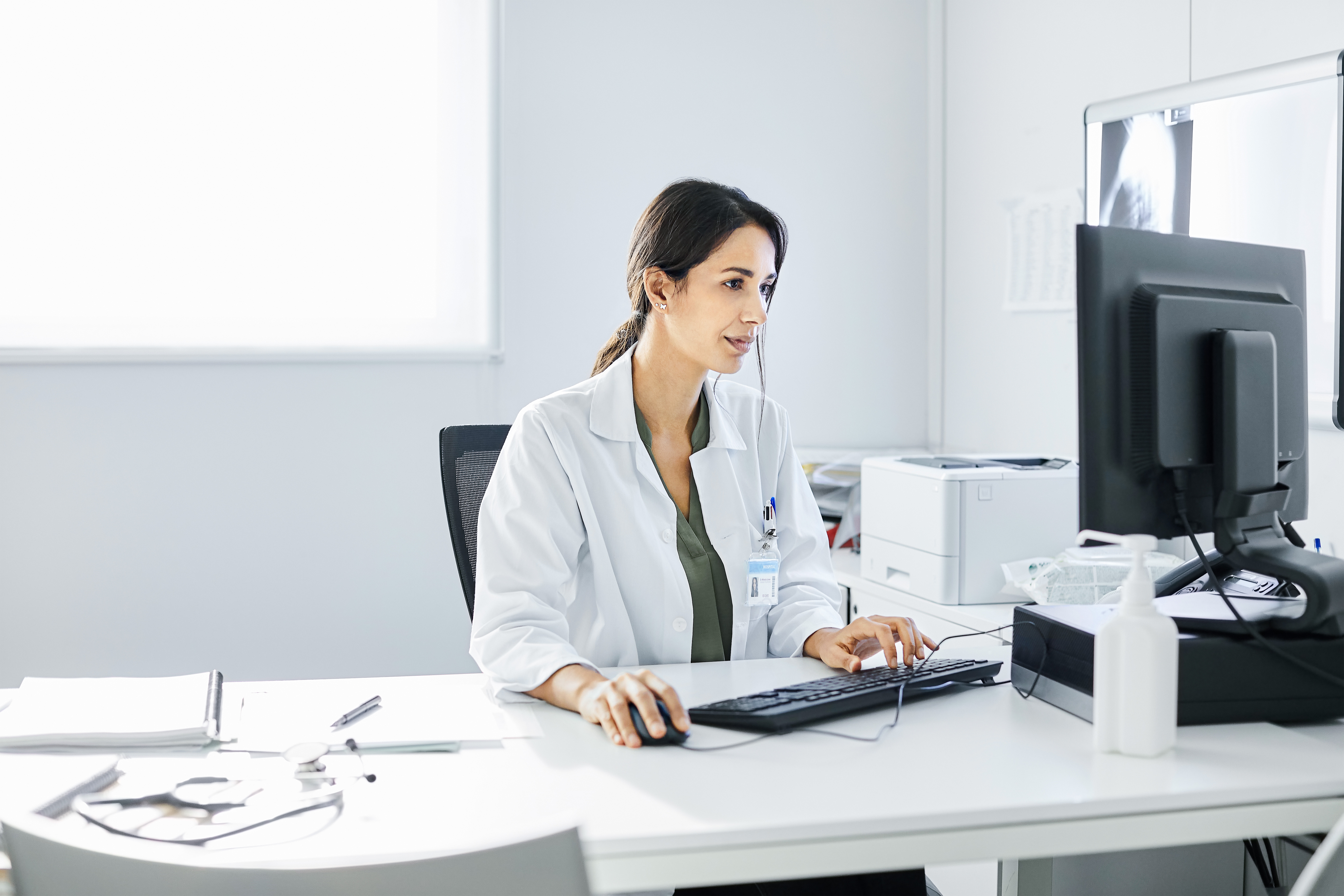
Modern Healthcare Technology Blog

From Good to Great: Insider Tips for Mastering 340B ESP™
Kristin Fox-Smith, Managing Director Visante
The 340B Drug Pricing Program has been instrumental in ensuring affordable prescription medications for healthcare organizations that serve our most vulnerable populations. However, recent restrictions imposed by manufacturers on 340B pricing for contract pharmacies have introduced a new wave of challenges for Covered Entities. This white paper will delve into the critical role of 340B ESP™ (Eligibility and Submissions Portal) in navigating these changes, exploring features, advantages, and practical implementation strategies to help Covered Entities (CEs) streamline data submission, compliance, inventory management, and maximize healthcare savings.
The Importance of 340B ESP™ in the Healthcare Landscape
Recent manufacturer restrictions on 340B contract pharmacy pricing have meant significant financial losses for Covered Entities and pose a critical threat to their ability to provide quality care to those who most need it. Amid these challenges, 340B ESP™ (Eligibility and Submissions Portal) emerges as a critical factor in addressing these financial setbacks. The success of leveraging 340B ESP™ largely hinges on a 340B ESP™ strategy, which includes sufficient resources and specialized subject matter expertise. It’s up to the covered entity to put that strategy into place.
What is 340B ESP™?
Pricing restrictions have been introduced by 21 manufacturers (MFR) since the onset of 2020. However, some of these manufacturers extend the possibility of restoring pricing if claims data is duly submitted to the 340B ESP™ platform. Others permit Covered Entities (CE) to regain access to 340B pricing, provided they designate a contract pharmacy, and have no owned retail pharmacies.
Functioning as an interface, 340B ESP™ was created to facilitate Covered Entities (CE) in two crucial aspects: submitting claims data to manufacturers and designating contract pharmacies. Note that not all manufacturers engage the 340B ESP™ platform. Despite this, some manufacturers still accommodate claim submissions or contract pharmacy designations. In such instances, Covered Entities (CE) are required to engage directly with the manufacturers. This intricate landscape underscores the complexity of the 340B ESP™ framework and makes tailored approaches for seamless integration a necessity.
Getting to Know ESP™
The portal is divided into distinct sections:
- The Home Screen: provides a summary of users, total CP count, and claims submission totals.
- Claims Data: allows users to upload claim files, access downloads of de-identified historical submissions, as well as metrics on conforming and non-conforming claims.
- Entity Profile: provides pricing eligibility status by pharmacy location and manufacturer.
- Reports: Generate and view reports on claims detail.
- Users: View and update your user list.
Common Issues and How to Address Them
Several common errors that are encountered when submitting data include:
- Invalid file format: The file uploaded must be in .CSV format.
- NDCs Error: NDCs need to be submitted in an 11-digit format, to include leading 0’s.
- Invalid field: The field name must match column mapping. Column mappings can be updated on the data submission screen by selecting the column mapping icon.
If you run into an issue and need additional support, 340B ESP™ has several help functions to assist you.
- Chat Feature: Access the chat feature by navigating to the bottom right-hand corner of the main screen, prior to logging in.
- Help Desk: Provides links to articles on common issues.
- FAQs: Provides a Q&A of frequently asked questions.
- Email: You can contact Support at support@340Besp.com. *Note that response time can be slow.
Streamlining Data Submission
How can you optimize your process for data submission? By collaborating with your Third-Party Administrator (TPA). Partnering together to streamline your reporting processes and maintain standardized data submission protocols better prevents errors and enhances efficiency.
Start by identifying the available reports from your TPA to obtain required claims data. Many, but not all, TPAs will have a standard report. If your TPA does not have a standard report, utilize a claims detail report and filter for only the required fields and NDCs that are needed for your 340B ESP™ submission.
To reduce any errors during data upload to 340B ESP™, a standardized reporting and uploading process is essential. Create a column mapping in 340B ESP™ for each TPA file format to ensure data accurately imports and become familiar with common errors when uploading (ex. NDC format).
Establish Audit Practices Among TPAs & Wholesalers
It is critical to routinely review audit reports that are provided by your TPA as well as the wholesaler pricing catalogs. Use the restricted NDC list to validate that only claims for restricted NDCs are present on TPA reports. Once pricing is restored for an NDC, a 340B pricing contract will be loaded in the wholesaler portal. To validate pricing, identify a product catalog report from each wholesaler that contains pricing and contract loads.
Become familiar with the process that each TPA utilizes to block NDCs, as each TPA may vary. Regularly assess pharmacy eligibility in 340B ESP™. Pharmacies can – and do – lose pricing eligibility after it has been restored if purchase volume is higher than the quantity of claims submitted.
Tracking Price Restoration
Typically, pricing restoration in collaboration with the wholesaler takes several weeks to months after eligibility confirmation within the 340B ESP™ framework. Engaging with your Third-Party Administrator (TPA) becomes pivotal in understanding how restricted National Drug Codes (NDCs) are blocked.
TPAs should be able to furnish a comprehensive report detailing the status of blocked NDCs. In some instances, certain TPAs employ automated procedures to unblock NDCs once their pricing is reinstated. In cases where TPAs lack an automated review process, the process of identifying price restoration must be conducted through the wholesaler's catalog. This information should then be communicated back to the TPA for alignment.
It is best practice to periodically review price restoration to identify any new NDCs with reinstated pricing or instances where pricing has been lost. To report Price Restoration, for most TPAs, an impact report is available, allowing for the identification of losses due to restrictions and gains from restored pricing. In cases where a standard report is not available from the TPA, you can utilize claims reports to align qualified claims with the restricted NDC list as an alternate approach. Validation of the actual purchase price can be achieved by referencing wholesaler invoice reports. The timeline from the initial submission of data to the point of the first purchase at restored pricing can vary, spanning anywhere from 3 to 8 weeks. This timeline's variability hinges on the capabilities of both the TPA and the wholesaler involved.
Ongoing Success Related to 340B ESP™
Maintaining open lines of communication with your vendors, including TPAs and wholesalers, is key to ongoing success. It Is valuable to designate a proficient Excel resource as your primary point of contact and have backups in place for seamless operations. Regularly overseeing pharmacy eligibility within the 340B ESP™ platform ensures consistent compliance.
To stay in the loop, ensure that at least one crucial stakeholder is a registered user with 340B ESP™. This guarantees the receipt of essential email updates and webinar invitations. Make it a point to engage in the webinars offered by 340B ESP™, as the system undergoes frequent upgrades, making each session a valuable learning opportunity. While the process may seem daunting, remember to approach it step by step. By breaking down the complex aspects into manageable tasks, you can navigate the challenges effectively and confidently.
Inventory Management and Optimization
Successfully managing and optimizing inventory involves several components. Firstly, ensure accurate code matching, encompassing exceptions and the mapping of Charge Description Master (CDM) to National Drug Codes (NDCs). Billing units, including package size and billing units per package, warrant meticulous attention to prevent discrepancies. Conduct a thorough utilization file review to ensure data accuracy. Likewise, regular invoice reviews, including verifying that invoice data is received electronically from the primary wholesaler, are crucial for maintaining a precise inventory record.
Leveraging your 340B software reports offers insights into inventory dynamics and setting appropriate PAR (Periodic Automatic Replenishment) levels is vital to maintaining optimal stock levels.
Lastly, conducting price checks ensures alignment between the invoice price and Apexus catalog price, contributing to cost optimization. Employing these practices collectively forms a solid foundation for efficient inventory management and resource utilization.
Reports
Utilize your 340B software to generate reports to investigate potential savings. These vital reports include:
- WAC Purchase Reports
- Potential Item Savings Reports
- Accumulator Reports
- Penny Buy Reports
Par Levels
Use the 340B accumulation data to determine the average daily utilization. Develop a routine evaluation of par levels. Note that high-cost items may require the pars to be evaluated more frequently.
Price Checks
At the change of each quarter verify the 340B pricing. Compare the invoice price to Apexus catalog price to stay informed of price differences. Look for any significant price differences, although some variation is expected due to contracted pricing.
340B Software Maintenance
Code Matching
The electronic medical record (EMR) will send a code of charges and dispensations sent to your 340B software to identify the drug dispensed or charged. This code can be a charge description master (CDM) code, HCPCS code, NDC code, or other code depending on the EMR setup. The code sent by the EMR must be matched or mapped to the NDC in the 340B software to receive eligible accumulations.
Your 340B software will have a queue of unmatched codes and NDCs which need mapping or matching. It should also have a mechanism to ignore or hide items that are not part of the 340B program (items that the CE has stated in their policy will not be purchased at the 340B price).
Use caution when ignoring or hiding items as different software will have different mechanisms for handling non-covered outpatient drugs and non-drug items (e.g., supplies). GPO-only items may be ignored or hidden, but they may need to be mapped or matched depending on the software. Supplies and other non-drug items can usually be ignored or hidden (check with your software vendor).
Billing Units
The Billing Unit Per Package (BUPP) is the total number of chargeable units per package that must be charged before the item can be reordered. The chargeable units can equate to tablets, milligrams, milliliters, J-Code, syringes, vials, etc. However, sometimes the quantity that is submitted in the pharmacy may differ from the quantity that comes across in the drug utilization feed that is displayed in the 340B software. Be sure to verify the accumulation data is up to date before placing an order and confirm the daily accumulation files have been uploaded. Be on the lookout for missing dates and line counts larger or smaller than the average line count. Then, you can place the order.
In the ever-evolving landscape of pharmaceutical pricing, the 340B Program remains a vital lifeline for healthcare organizations serving those in need. However, due to recent manufacturer restrictions – with more on the horizon – developing a 340B ESP™ strategy is essential to your 340B program’s success. With a deeper understanding of 340B ESP™, along with tips to optimize your program – you can optimize your program for optimal savings, allowing you to provide care to those who need it most.
Kristin Fox-Smith, Managing Director
Visante
Follow Cervey on socials to stay tuned for upcoming webinar announcements:
Contact Cervey for a demo of our 340B suite of web-based products that help 340B-eligible healthcare providers with their of their most pressing 340B needs: maximizing savings, ensuring compliance, and optimizing the performance of their contract pharmacies.


